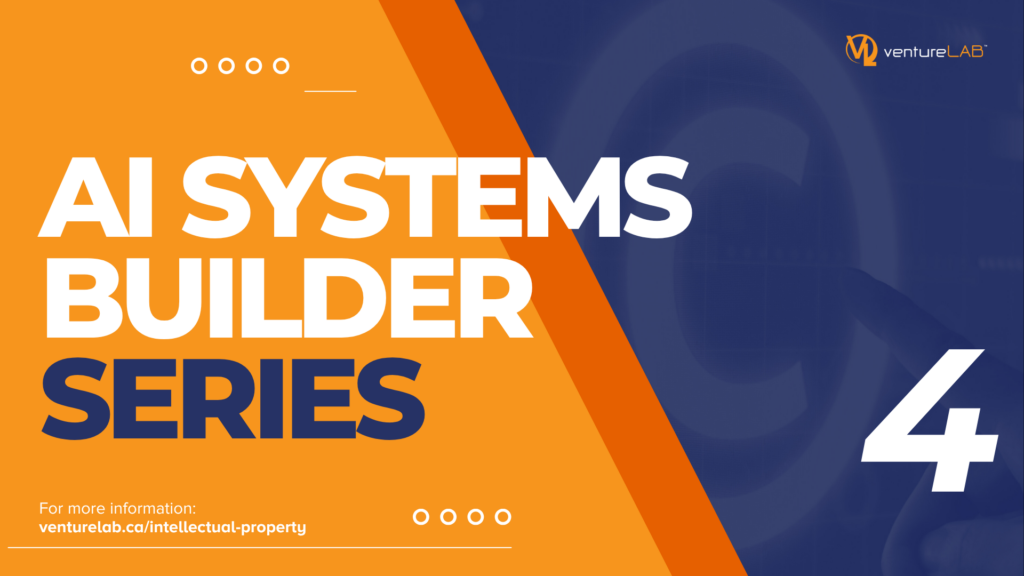Home » The IP Checklist for AI Systems Developers – Part 4: User Interface and Outputs of AI Systems
The IP Checklist for AI Systems Developers – Part 4: User Interface and Outputs of AI Systems

Building an AI system involves more than just algorithms, code, and data; it carries significant responsibilities. One of the primary concerns is ensuring that the system's components are not derived from stolen data or used in ways that could result in harm if the system is hacked or misused.
### AI Deployment and User Interface – Trademarks
AI models are typically deployed through web applications, Application Program Interfaces (APIs), or embedded systems with which users interact directly. This connection fosters brand loyalty among consumers, making it crucial for companies to safeguard their brand identities through registered trademarks or industrial designs. For instance, products like Amazon’s Alexa and OpenAI’s ChatGPT are trademarked to protect against imitation and brand dilution, thereby enhancing their distinctiveness.
### Securing Unique User Interfaces
Unique visual elements or interactive features in AI user interfaces can be protected through industrial design rights or trademarks. Industrial design refers to the aesthetic aspects of a product, such as shape, pattern, or layout. Such legal protections grant creators exclusive rights to their designs, preventing others from copying or utilizing them without permission, which is essential for maintaining brand integrity.
### Ownership of AI-Generated Work
As AI systems grow adept at producing innovative and creative outputs, a pivotal legal issue arises: ownership of these outputs when no human creator is involved. Current patent laws generally require the inventor to be a "natural person." Notably, Dr. Stephen Thaler has sought to classify his AI system, DABUS, as an inventor in various jurisdictions, but courts worldwide—except in South Africa—have ruled that only humans may be recognized as inventors. This means that human involvement remains essential for the eligibility of AI-generated inventions to be patented.
### Implications for Companies
For firms leveraging AI technology, human input is vital to claim ownership over AI-generated inventions or creative works. The ongoing debate regarding AI as a potential inventor or author has notable implications for intellectual property (IP) law. In Canada and many other jurisdictions, laws currently permit only human beings to hold such rights.
### Reducing Liability for AI-Generated Content
Given the complex IP landscape, AI creators and those offering AI-generated content should engage legal counsel to develop agreements that clearly delineate usage rights and liabilities. Properly structured licensing agreements and service contracts are essential for avoiding unauthorized use under third-party interfaces or development kits. Additionally, incorporating disclaimers or indemnity clauses is becoming increasingly common. These provisions limit liability for specific AI-related issues, such as intellectual property infringements, hallucinations, and the potential for defamation or dissemination of false information, thereby protecting service providers from unintended consequences arising from AI outputs.
### Conclusion
The rapid advancement of AI technology introduces various IP disputes and regulatory challenges. Companies must actively protect their intellectual property to leverage AI's capabilities while mitigating risks. Adhering to legal frameworks and taking proactive measures are crucial for businesses operating in this evolving landscape.
### About the Author
Allessia Chiappetta, a second-year JD candidate at Osgoode Hall Law School, specializes in intellectual property and technology law. With a Master of Socio-Legal Studies focused on AI regulation, she advises inventors through Communitech’s ElevateIP initiative. Allessia is an active writer on IP issues and is proficient in English, French, and Italian.
VentureLAB
https://www.venturelab.ca/
ventureLAB is a leading global founder community for hardware technology and enterprise software companies in Canada. Our organization is led by seasoned entrepreneurs and business leaders with decades of industry experience in building IP-rich start-ups, scale-ups, and global multinationals to help you scale your business. Located at the heart of Ontario’s innovation corridor in York Region, ventureLAB is part of one of the biggest and most diverse tech communities in Canada. We enable technology startups to accelerate the commercialization of transformational products on a global scale.


